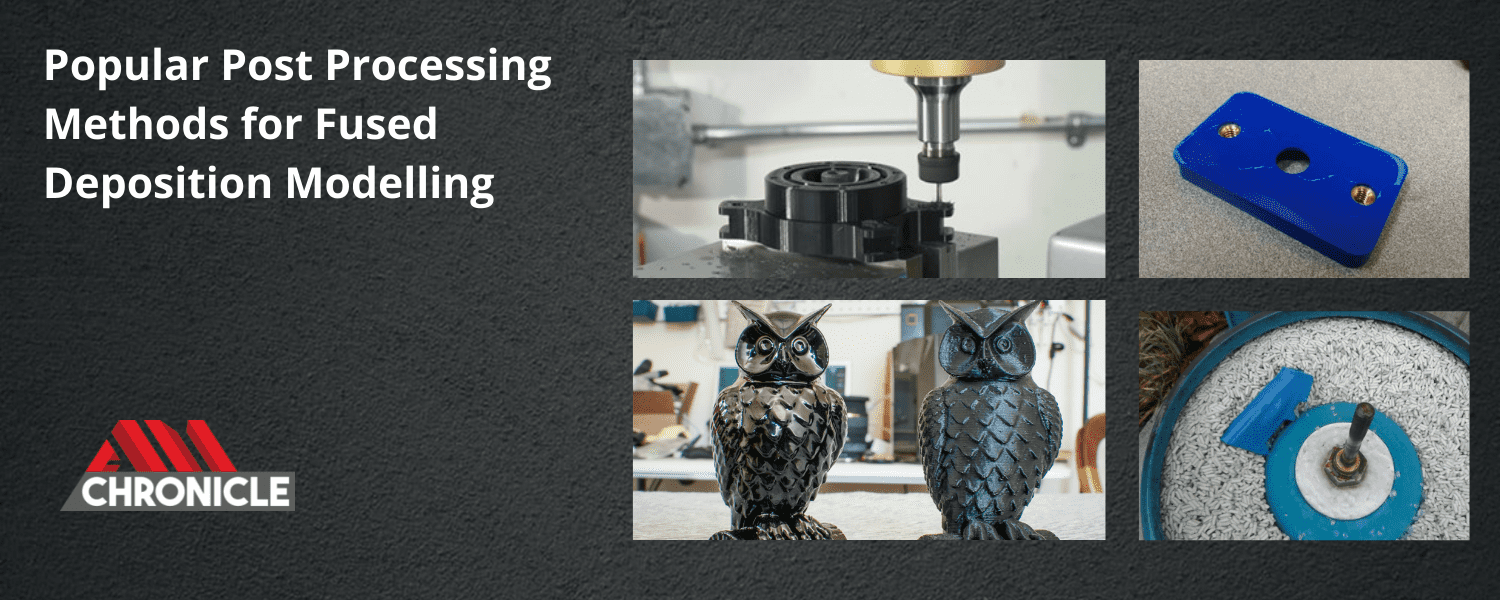Additive Manufacturing is one of the fastest expanding manufacturing sectors, with applications in a wide variety of industries. Additive manufacturing is described as the technique of layer-by-layer production of products. The fundamental benefit of the additive manufacturing technique is that it can generate complex structures at a low cost and without the use of expensive machines. Many additive manufacturing technologies have been developed that can print a wide range of materials. However, one of the highly utilized methods is fused deposition modeling (FDM). The FDM approach has been widely studied in the literature and is currently used in areas of medicine, engineering, and art. Post-processing is the process of treating FDM-produced items to get the required technical attributes. The article explains several post-processing processes used in the FDM process. The qualities that are enhanced by the FDM process are also elaborated.
Cleaning and Preparation
The cleaning and preparation process is mainly followed on all the FDM-produced items. The cleaning and preparation procedure is linked with the removal of superfluous materials and support structures complete the product. In some cases, tools may be used, and in some situations, industrial instruments are also used.
Painting
Painting is a popular method for improving the surface roughness and coloration of FDM-produced objects. Painting can be done using a brush or a spray and is mainly used to improve the part life and color the part. The method is very popular to develop 3D printed lifestyle products such as toys and crafts.
Treatment with Acetone
Acetone Treatment is the technique of dipping items in an acetone solution to improve surface roughness. When compared to abrasive finishing, CNC machining, manual cleaning, peeling, and spray painting, the acetone treatment procedure gives the greatest results in terms of surface roughness improvement.
Image Source: Sink Hacks
Use of Lasers
There is a lot of debate over using lasers as a post-processing tool in the FDM process. The primary focus is to increase the part’s dimension accuracy and surface polish. A process is usually performed utilizing a low-power CO2 laser to increase dimensional accuracy and surface finish of the part.
Vibratory Finishing
A vibrating bowl is used in the vibratory finishing process to improve the mechanical qualities of the FDM printed part. Mechanical qualities improve as a result of the abrasive action that takes place in the vibrating bowl.
Image Source: Soli Forum
Ball Burnishing
Ball burnishing is a post-processing technique that involves using a burnishing tool on a lathe machine to enhance the mechanical qualities of FDM-produced components. According to the research, the method enhances the hardness and surface roughness of ABS components.
Sand Blasting
Sandblasting is a technique that involves using a sandblasting cannon on printed items to eliminate burrs and enhance surface polish. The method is widely used if large number of burrs occur on the FDM printed part.
Sanding by Hand
Manual sanding is a post-processing technique in which sandpapers are used to increase dimensional accuracy and surface finish. It is recommended to start with low grit sandpaper and work your way up to fine-grit sandpaper. The method is used by hobbyist 3D printers and is also used in low-scale manufacturing.
Machining using CNC
CNC machining is utilized to increase the surface roughness and dimensional accuracy of FDM-produced objects. Due to the strong reliance of the FDM process on deposition angle, the study on the use of CNC machining for improving surface roughness of FDM printed parts suggests that interpreting the optimal cutting parameters for the FDM printed components is quite difficult.
Image Source: Stratasys Direct
Inserts made of metal
Metal inserts are utilized in threaded regions of an FDM-produced item. As the metal inserts operate as reinforcement in that location, the method lowers stress concentration in the areas of the hole. The procedure begins with heating the metal insert and pressing it into the hole; after cooling, the metal insert is snugly fitted within the hole.
Welding
One of the limitations of FDM printers is that the print size is restricted. As a result, large size items have been manufactured in pieces. This large-size product is joined together with the help of welding. The common welding methods include adhesion with industrial glue.





